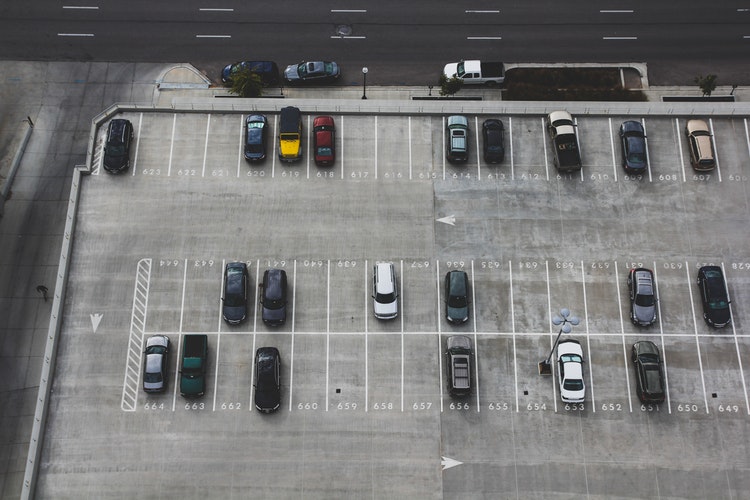What are the Elements of a Parking Area Management Plan?4 min read
Unrestrained motorization in urban areas is increasingly contributing to traffic congestion and a parking space crunch. Land being a limited and shrinking resource, the need for replacing traditional parking spaces with a more sustainable parking plan is fast gaining gravity. As a result, Parking Area Management Plans (PAMP) are being proposed to make our cities more liveable.
What is a Parking Area Management Plan?
A Parking Area Management Plan is a clearly defined set of measures proposed by local urban development bodies in discourse with local residents and private stakeholders. Drafting a PAMP begins with a thorough on-site survey, which gathers data related to on-street and off-street parking. Apart from free and available spaces, the intended purpose of surrounding areas is also factored in, such as land for hawking, walking, cycling, and areas designated as halting spots for public transport. The surveyed space is then divided into dedicated regions with the purpose of utilizing them in an integrated fashion rather than in isolation. PAMPs are helpful in organizing parking in an area, relieving pressure on land, preventing illegal parking, etc., when applied uniformly across an area with a well-defined boundary.
However, there is no standard definition for a PAMP, the concept encompassing a variety of management approaches. The Delhi Master Plan 2021 has proposed a few fundamental elements of PAMP, which are underway. Let’s take a look at them.
Consultative approach
Prepared by a local body in consultation with several stakeholders, A PAMP is created after ground-level surveys to assess parking demand, nature of parking accumulation, traffic and circulation patterns in the area, road alignment, and walkability of pavements in an area. The surveys also evaluate the situation of public transport connectivity, traffic pressure, and management systems, placement of hawkers, parks, public amenities, and land-use patterns.
Delineation of a PAMP’s boundary
Preparing PAMPs requires defining a zone through a natural boundary. Short and long-term parking spaces are identified and priced accordingly to reduce demand. On-road parking must be prioritized for short-term parking with higher parking rates than long-term parking facilities in surface areas.
Legal parking areas are demarcated based on ground-level surveys in residential and commercial areas, public amenities and utilities; green and open areas; and hawkers. Demarcation of one lane for the movement of emergency vehicles in all residential areas must be mandatory, the area to be free of all encroachments.
No parking allowed in green areas
The Delhi Master Plan 2021 mandates that green areas and parks cannot be used for parking. Additionally, green areas should constitute 10-20% of an area overall. However, underutilized areas or community centers can be used for parking to augment the local supply of parking.
Multi-level parking
Multi-level parking must be decided in the context of a PAMP instead of as a standalone project. Where a multi-level parking facility is provided, proper entry and exit are planned, with adequate circulation areas, so as to not choke circulation in the area. To leverage such structures and reduce on-street pressure, on-road parking within at least 200 square meter radius of the structure is curtailed.
Shared facilities
Instead of standalone multi-level parking, commercial and residential blocks wherein parking facilities can be shared should be promoted. A single parking facility can be used by different types of users with varying peak demands. For instance, an office complex can share its parking with a movie theatre since their peak demand hours are different.
Parking supply
To limit parking supply, legal parking areas must be demarcated, illegal parking is to be penalized, and parking should be priced appropriately. This can also encourage the use of public transport, cycling, etc.
Parking prices
Parking should be priced optimally – not too high to affect occupancy or too low to induce demand. Variable pricing based on demand and peak hours can be adopted. Because one-time charges and annual passes do not reduce demand, they aren’t allowed. Parking rates must be applied to the entire PAMP area to avoid spillover to non-priced or low-priced areas.
Permits
Introducing residential parking permits is advised for equitable access to legal parking areas. The rate of the permit can be decided by the residents and urban local bodies.
Reforming parking contracts
Agreements with parking contractors are to be modified to include PAMP requirements. Contractors must be made accountable for the enforcement of parking rates and are liable for the violation of parking rules. They are to invest in signages, metering, RFID tags for motor vehicles, vacancy display boards, etc. In high priority areas, online reservation of parking is also provided.
A combination of these elements based on the prevailing traffic conditions and local rules and regulations will help in formulating an ideal Parking Area Management Plan, which will successfully tackle any parking menace. Urban local bodies will thus need to reach out to residents and other end-users to explain the benefits of such a systematic approach to parking.



